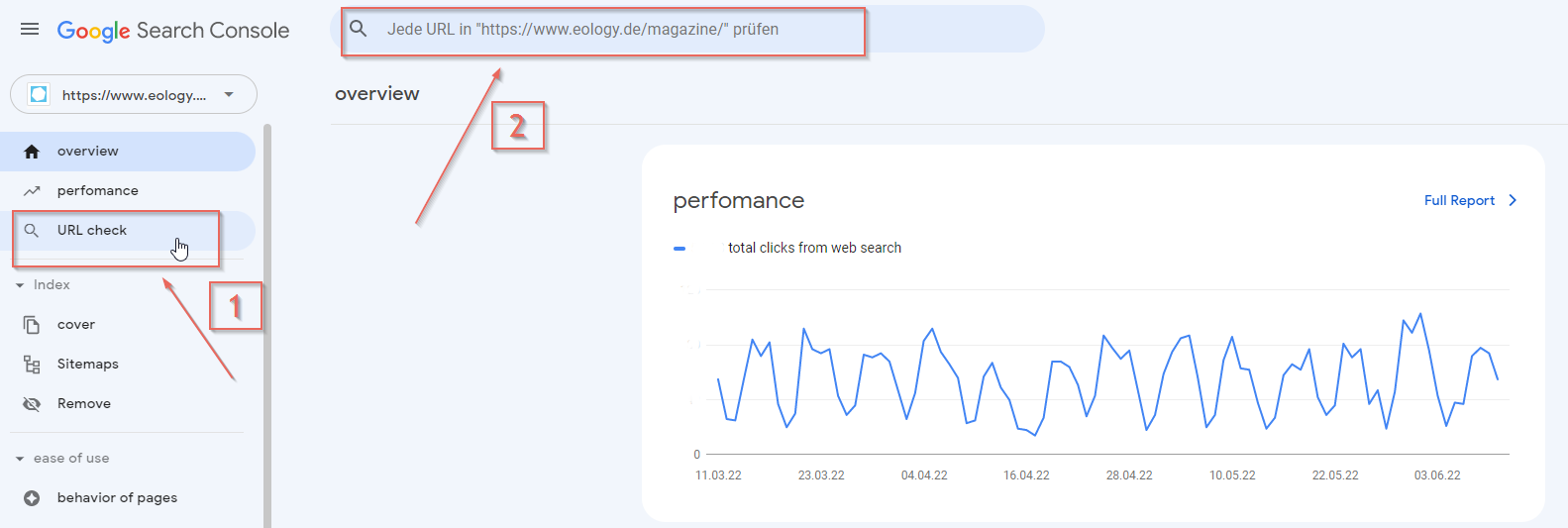A landing page is a website whose visitors come from search engines, social networks, or other websites. The goal of a landing page is to convert website visitors into customers. Learn more here. ... Continue reading


The Google Index is a database where Google collects information about websites. This information is used to rank and evaluate websites when searching for specific keywords. The higher a website is in the index, the more likely it is to show up in a search. To be included in the Google Index, a website must be visited and “read” by the Googlebot. This is done by the bot looking at the website and following all available links on the page. Alternatively, you can manually request that your site be indexed via Google Search Console. If a page is in Google’s index, it does not necessarily mean that it will show up in every search. The position of a page in the search results depends, for example, on the keywords you use on your page.
Learn here how to do your keyword research correctly 😊
A crucial aspect that you should definitely consider when indexing your website is mobile-first indexing. Since 2018, Google has primarily used the mobile version of your website to evaluate its content and rank it in search results. This means that it is no longer enough to optimise only the desktop version. Your site must work optimally on mobile devices to achieve a good ranking. Factors such as fast loading times, user-friendly navigation and the correct display of all content on smartphones and tablets are essential. If your website does not perform well on mobile devices, you risk a lower position in the Google index, even if the desktop version is flawless. So make sure that your web design is mobile optimised to exploit its full SEO potential.
Indexing pages on Google is essential for anyone who wants to rank well in the SERPs. Since search engine results are usually responsible for more than 70% of traffic, a lack of indexing can mean that traffic to your website will immediately decrease and the overall visibility of your website will drop as a result. Generally speaking, indexing helps you achieve better search engine marketing results: The more pages of your business are indexed by Google, the better you can rank in the search results and the more traffic you will get on your website. Once you are well positioned in the SERPs, the likelihood is very high that users will become aware of your content and that you will be able to achieve a conversion as a result. Ultimately, Google’s system allows it to identify relevant and high-quality content in order to present the best results specifically for each individual search query.
The easiest way to get indexed is via Google Search Console. Here you should first check whether your desired page is already in the index. To do this, log into the Google Search Console, click on URL check and enter the URL you want in the search bar at the top.

You will then immediately receive the result of whether the page has already been indexed. If this is not the case, you can request the indexing of the page via the button.

That was it already 😊
Google indexes websites several times a day. It is a continuous process where the search engine is constantly looking for new pages and updated content. This process is called “crawling”. Google crawls websites by following hyperlinks and reading the content of the page. When a website is first indexed by Google, this usually takes a few days to weeks. If you submit your site through Google Search Console as described above, you can speed up the crawling process. After a site has been indexed by Google, it is usually checked periodically by Google to see if the content has been updated. If the content on the site has been changed, Google crawls the page again to capture and reflect the changes. Usually, Google tries to index new pages, or the changes within 24 hours. However, there are factors that can slow down the indexing process. For example, the website must meet certain technical requirements in order to be indexed:
To ensure that your website is indexed by Google without any problems, regular monitoring of the crawling process via Search Console is recommended. This way you can make sure that all your pages can be found and indexed without any problems.
You want to learn more about exciting topics?

